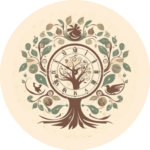Percivall Willughby (1596–1685) despised the midwives of his time. In his 1670s book, Observations in Midwifery, he intended to ‘inform the ignorant common midwives’, whose brutal methods were responsible for so many deaths – according to him. Although his book wasn’t published until almost two centuries later, Willughby was writing in a period in which male practitioners were gradually taking over the role of midwives in Britain (or at least trying to). Many of his contemporaries wrote similar accounts, no doubt motivated by asserting their claim on the medical marketplace, although Willughby’s writing is particularly striking. According to him,
‘midwives will pull, stretch, or hale their [the mothers’] bodies, or use any violence to enforce the womb, in hopes of a speedier delivery. Such strugglings and doings make a difficult, painful, and long labour.’
But was any of that true? What made a 17th-century midwife good at her job? And can we trust men like Willughby?

Challenging Bias in 17th-Century Midwifery
Well, until fairly recently, most people did believe these accounts by male midwives. Traditional midwives were depicted as stereotypically ignorant, poor, superstitious, and unskilled. Perhaps the main reason for that is that the first historians of midwifery in Britain were physicians – not trained historians – who tended to take male medical practitioners of the past, such as WiIllughby, at their word. This, of course, also reflected the biases of these 19th-century writers, who struggled to see women (whether in the present or the past) as skilled and capable at what they considered ‘male activities’.
Fortunately, social historians have spent decades deconstructing this stereotype thanks to a wealth of primary sources, including records kept by the midwives themselves, their clients, and the licensing authorities. So, what made a 17th-century midwife good at her job?

Ethical Standards for 17th-Century Midwives
Perhaps the best way to answer this question is to look at how midwives were licensed, which was the responsibility of the Church of England. Midwives swore oaths, which often included:
- Making their services available to both rich and poor women (whom they often attended for free)
- Reporting information on the father of the baby and suspected bastardy
- Not engaging in witchcraft
- Baptising infants who probably wouldn’t survive
- Notifying the ecclesiastical authorities of any baptisms performed
- Not ‘switching’ babies
- Not procuring abortions
- Maintaining patient confidentiality
- Not using instruments or mutilating babies in the womb
- Making sure that stillborn babies were buried properly
- Cooperating with other midwives and instructing their deputies (apprentices)
- Reporting midwives who didn’t conform to these guidelines
As you can see, these injunctions have much to do with professional ethics, both from a medical and religious perspective, but they also highlight the importance of helping fellow midwives, of cooperating in difficult deliveries as well as instructing the new generations of midwives. Midwives should be of ‘good character’ and practising Christians, active in their communities and parishes. Still, you might be thinking that none of these criteria seems to take skill into consideration.

The Path to Becoming a 17th-Century Midwife
In 17th-century Britain, most midwives practised for long periods before obtaining their licenses. They usually started as a deputy to an older, more senior midwife, in order to gain experience. They attended deliveries and helped their mentors for years before working on their own, with these informal apprenticeships lasting from four to ten years. So, when midwives applied for their licenses, it wasn’t unusual for them to have decades of experience, especially since the licensing process was so expensive, and so they might need time to save for their application fees.. Besides gaining experience through practice, midwives were usually married women or widows, often with children themselves, which only added to their empirical, ‘bodily’ knowledge about childbirth and female health. (Read about the all-female early modern world of childbirth here.)
What is perhaps most telling about these midwives and their careers was the way their clients spoke about them. You see, besides being a ‘good Christian’, swearing to their oath, and undergoing informal apprenticeships, midwives were expected at their licensing to give evidence of their skill, which normally involved their clients testifying in their favour. Many women would come forth and praise their midwives to the licensing authorities, sometimes dozens of them, describing how many times they had been delivered and how capable the midwife was. Of course, the higher these clients were on the social scale – say, a gentlewoman – the more these testimonies would weigh in the midwife’s favour. They might include passages like these:
‘…she [the midwife] is not only helpful to the rich and those that can pay her but also to the poor’.
‘…she had the blessing to be a means for the safe delivery of others whose names are here subscribed and many others…’
‘[she has] good skill, experience and success in midwifery and has safely delivered several women in childbed with good success…’

Community Esteem and Expertise of 17th-Century Midwives
So, what made a 17th-century midwife ‘good’ was a mix of their good character, skill, piety, ethics, and involvement in their communities. Although the licensing system wasn’t perfect, it ensured standards of good conduct and practice as well as ascertained practical skills through clients’ testimonies and legitimised deputy midwives’ apprenticeships. Midwives were commonly well-known and respected in their communities, by people of all social groups. Besides their clients’ accounts of their skill, midwives were often called to testify as ‘experts’ in early modern courts, such as in the case of women ‘pleading the belly’ (declaring they were pregnant to avoid execution). (You can read more about the ‘Jury of Matrons’ here.) But midwives would also testify in bastardy cases or when someone was accused of rape, which indicates how they were perceived by their communities as medical ‘experts’.
Moreover, as midwives started to publish midwifery manuals, in no small measure to assert their authority over the world of pregnancy and childbirth, which they perceived as increasingly threatened by male practitioners, some midwives became widely known. That’s the case of Jane Sharp (1641-1671), the best-selling yet mysterious English author, and Louise Bourgeois or Boursier (1563-1636), the French royal midwife. In their writings, we get a glimpse of an early modern midwife’s life; they were aware of their responsibilities and committed to caring for women as part of a sisterhood.

Resisting the Narrative: Reevaluating the Skills of 17th-Century Midwives
Despite what man-midwives like Percival Willughby wrote, 17th-century midwives were generally very skilled and experienced, as hundreds of testimonies, letters, and journals tell us (including some accounts by physicians themselves!). Most of them followed an informal apprenticeship and this all-female network allowed them to cooperate and learn from each other. It wasn’t rare for a midwife to call a colleague to help in a complicated delivery; this wasn’t seen as a failure, but rather how a midwife should proceed. Midwives weren’t poor, ignorant, and dangerous practitioners. Rather, they were known for their patience, skill, kindness, and, crucially, for their knowledge, which derived from practical experience.
Yet it is telling that this negative stereotype of midwives as ignorant and unskilled persisted. With the medicalisation of childbirth and the rise of male midwives and their tools, such as forceps, traditional midwives were gradually replaced, and male practitioners eager to cement their new role were quick to decry them. As for Victorian physicians interested in the history of medicine, they believed their predecessors’ accounts and didn’t question how capable midwives actually were and whether man-midwives might have had an economic interest in degrading them.
As a historian, it is difficult to ignore the mounting evidence of 17th-century midwives’ skill and professionalism. Personally, having met midwives and been safely delivered by one myself, it seems hard to believe their depiction of midwives as violent and brutal. Lastly – and ironically-, it is likely that much of Willughby’s knowledge about childbirth (as well as many other man-midwives’) came directly from the midwives they so disparaged in their writings, who often instructed them, such as Willughby’s own daughter. But that’s a matter for another day.
References:
Louise Bourgeois, Observations diverses (Paris: 1609).
Jane Sharp, The Midwives Book (London: 1671).
Percival Willughby, Observations in Midwifery (Warwick: 1863).
Further Reading:
David Cressy, Birth, Marriage, and Death: Ritual, Religion, and the Life-Cycle in Tudor and Stuart England (Oxford: 1997).
Doreen Evenden, The Midwives of Seventeenth-Century London (Cambridge: 2000)
David Harley, ‘Ignorant Midwives – a persistent stereotype’, The Society for the History of Medicine Bulletin 28 (1981), pp. 6-9.






